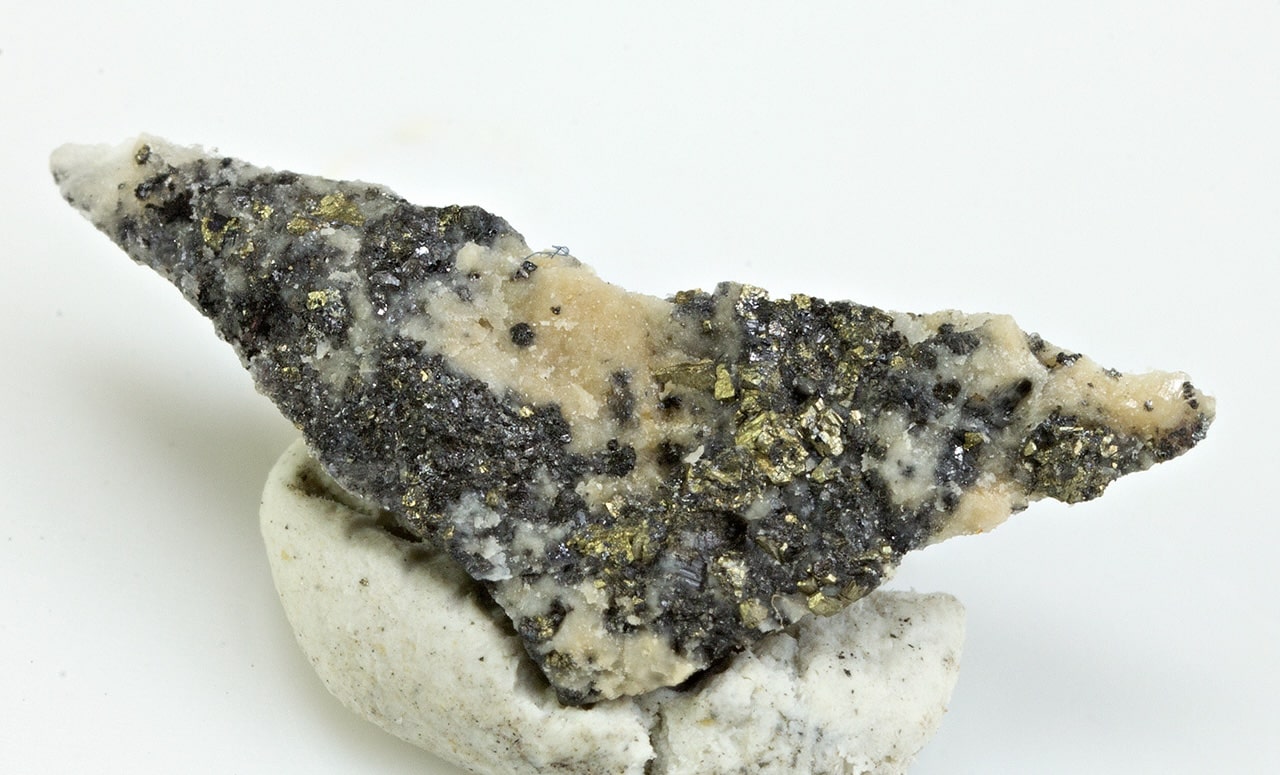
What is Canfieldite? This rare mineral, named after Frederick Alexander Canfield, is a silver-tin sulfide. Found mainly in Bolivia, it often appears in hydrothermal veins. Why is it special? Its unique crystal structure and metallic luster make it a favorite among collectors. How is it formed? Typically, it forms in environments rich in silver and tin, often alongside other minerals like stannite and pyrite. Where can you find it? Besides Bolivia, it has been discovered in countries like Germany and the Czech Republic. What are its uses? While not widely used industrially, it holds significant value for mineralogists and gem enthusiasts. Is it valuable? Yes, due to its rarity and aesthetic appeal.
Key Takeaways:
- Canfieldite is a rare mineral with high silver and tin content, found in Bolivia, Germany, and Mexico. It's prized by collectors and has applications in mining, research, and even jewelry.
- Named after Frederick Alexander Canfield, Canfieldite's unique properties make it a sought-after specimen for mineral collections and a subject of interest in scientific research and metallurgical studies.
What is Canfieldite?
Canfieldite is a rare mineral that has intrigued geologists and collectors alike. Its unique properties and fascinating history make it a subject worth exploring. Here are some interesting facts about this captivating mineral.
-
Canfieldite is a sulfide mineral composed primarily of silver, tin, and sulfur.
-
It was first discovered in Bolivia in 1893 by American mineralogist Frederick Alexander Canfield, after whom it is named.
-
The mineral typically forms in hydrothermal veins, which are fractures in rocks filled with mineral-rich water.
-
Canfieldite is often found alongside other minerals like cassiterite and stannite.
-
It has a metallic luster and is usually dark gray to black in color.
Physical Properties of Canfieldite
Understanding the physical properties of Canfieldite can help in identifying and studying this mineral. Here are some key characteristics.
-
Canfieldite has a Mohs hardness of 2.5 to 3, making it relatively soft.
-
The mineral has a specific gravity of 6.28, which means it is quite dense.
-
It exhibits cubic crystal system, often forming in well-defined cubes or octahedrons.
-
Canfieldite is opaque, meaning it does not allow light to pass through.
-
The streak of Canfieldite, which is the color of its powdered form, is black.
Chemical Composition of Canfieldite
The chemical makeup of Canfieldite is what sets it apart from other minerals. Here are some details about its composition.
-
The chemical formula for Canfieldite is Ag8SnS6.
-
It contains silver (Ag), which makes up about 75% of its composition.
-
Tin (Sn) is another major component, accounting for around 15%.
-
The remaining 10% is sulfur (S).
-
Trace amounts of other elements like iron and copper can sometimes be found in Canfieldite.
Occurrence and Locations
Canfieldite is not found everywhere. Its rarity adds to its allure. Here are some places where it can be found.
-
Besides Bolivia, Canfieldite has been discovered in Germany and Mexico.
-
In Bolivia, it is primarily found in the Potosí Department, a region known for its rich mineral deposits.
-
The mineral is also found in the Himmelsfürst Mine in Germany.
-
In Mexico, Canfieldite has been located in the Guanajuato mining district.
-
Small quantities have also been reported in Peru and China.
Uses and Applications
While Canfieldite is not widely used in industry, it has some interesting applications. Here are a few.
-
Due to its high silver content, Canfieldite can be a source of silver in mining operations.
-
It is highly valued by mineral collectors for its rarity and unique properties.
-
Canfieldite samples are often displayed in museums and educational institutions.
-
The mineral is sometimes used in scientific research to study hydrothermal processes.
-
It is also of interest to gemologists and jewelers, although its softness limits its use in jewelry.
Fun Facts about Canfieldite
Here are some lesser-known, fun facts about Canfieldite that might surprise you.
-
Canfieldite is named after Frederick Alexander Canfield, who was not only a mineralogist but also a civil engineer.
-
The mineral was initially mistaken for argentite, another silver sulfide mineral.
-
Canfieldite is often found in association with silver ores, making it a secondary mineral in silver mining.
-
The mineral's unique combination of silver and tin makes it a subject of interest in metallurgical studies.
-
Canfieldite's rarity and unique properties make it a prized specimen in private mineral collections.
The Fascinating World of Canfieldite
Canfieldite, a rare and intriguing mineral, offers a glimpse into the Earth's geological wonders. Found primarily in Bolivia, this silver-tin sulfide mineral captivates collectors and geologists alike. Its unique crystal structure and metallic luster make it a standout in any mineral collection. Beyond its aesthetic appeal, canfieldite holds significant scientific value, helping researchers understand mineral formation processes and the geological history of its native regions.
Whether you're a seasoned mineral enthusiast or just starting your collection, canfieldite is a gem worth exploring. Its rarity and beauty make it a prized addition, while its scientific importance adds depth to its allure. So next time you come across this fascinating mineral, take a moment to appreciate the stories it tells about our planet's past. Happy collecting!
Frequently Asked Questions
Was this page helpful?
Our commitment to delivering trustworthy and engaging content is at the heart of what we do. Each fact on our site is contributed by real users like you, bringing a wealth of diverse insights and information. To ensure the highest standards of accuracy and reliability, our dedicated editors meticulously review each submission. This process guarantees that the facts we share are not only fascinating but also credible. Trust in our commitment to quality and authenticity as you explore and learn with us.


